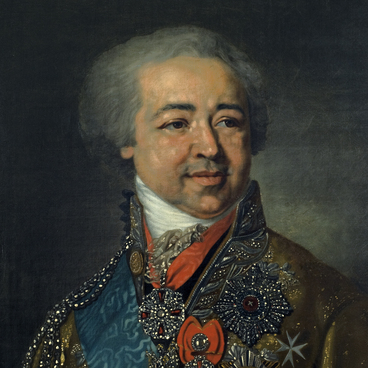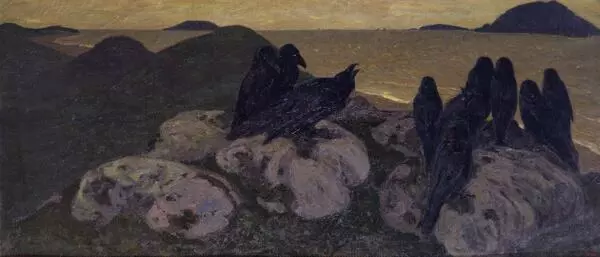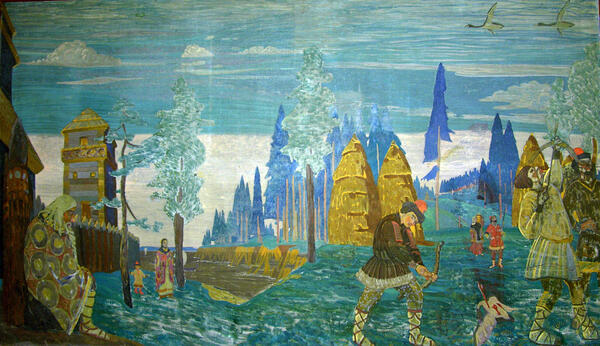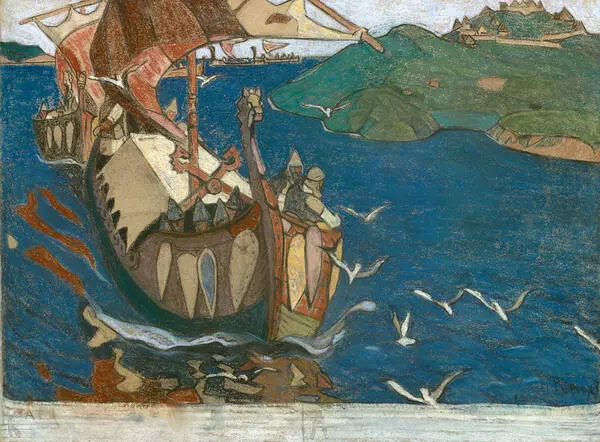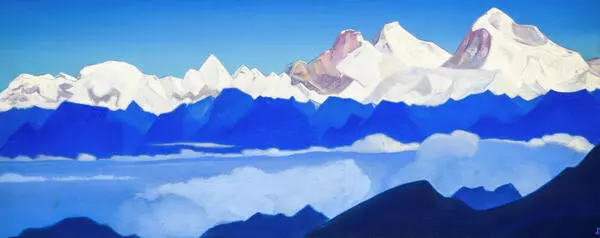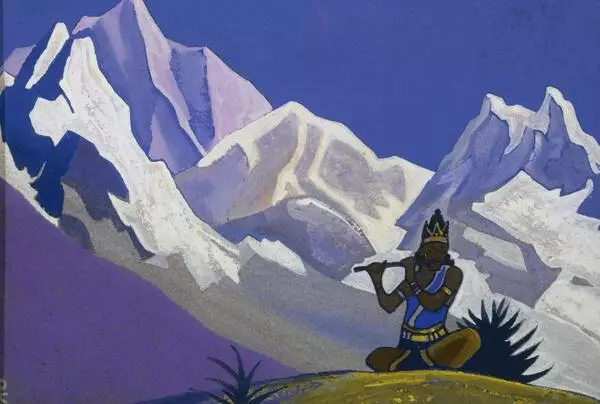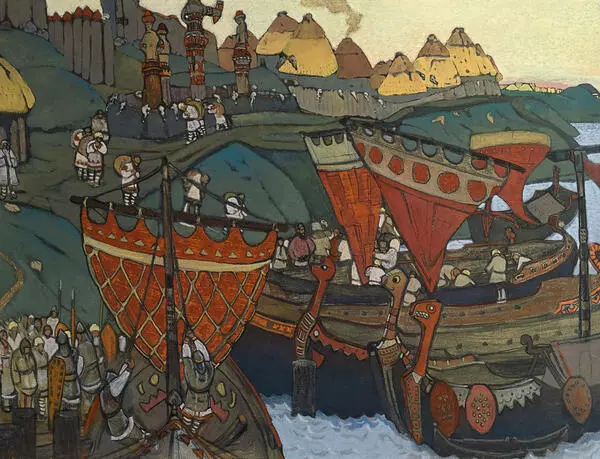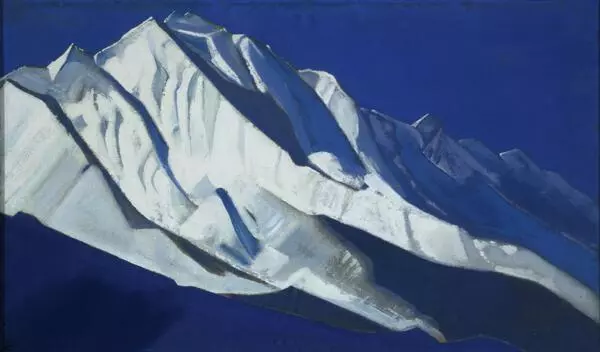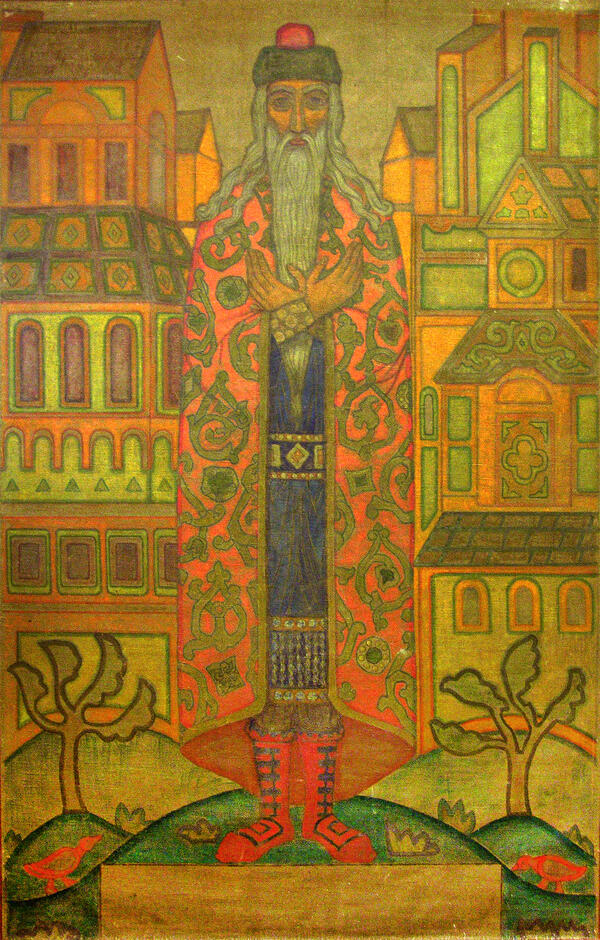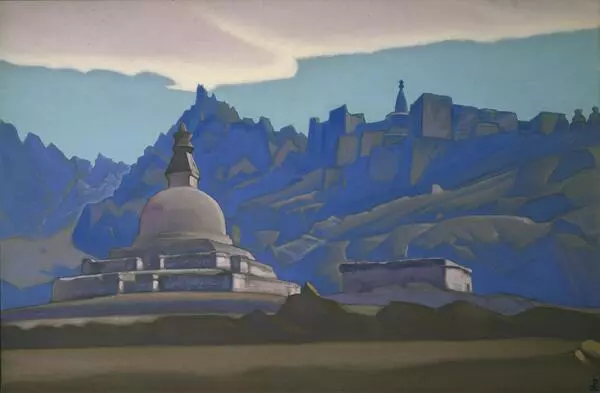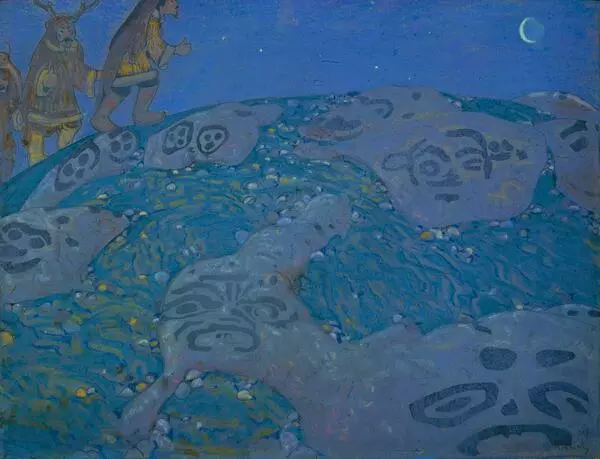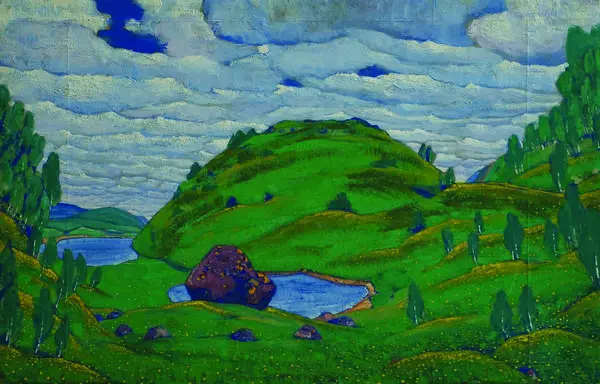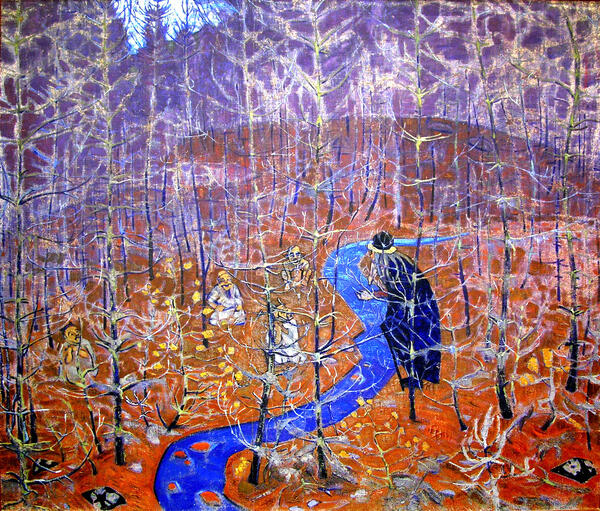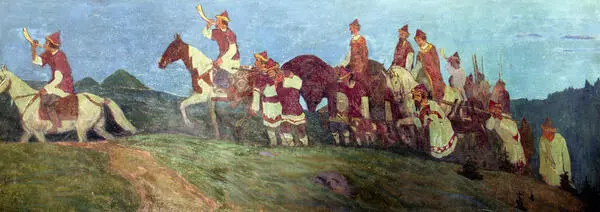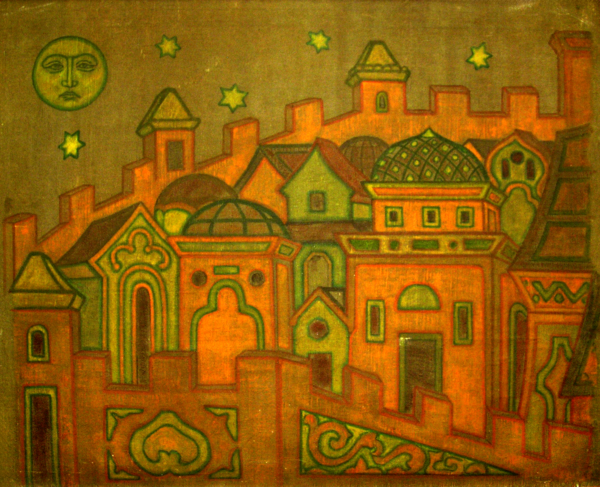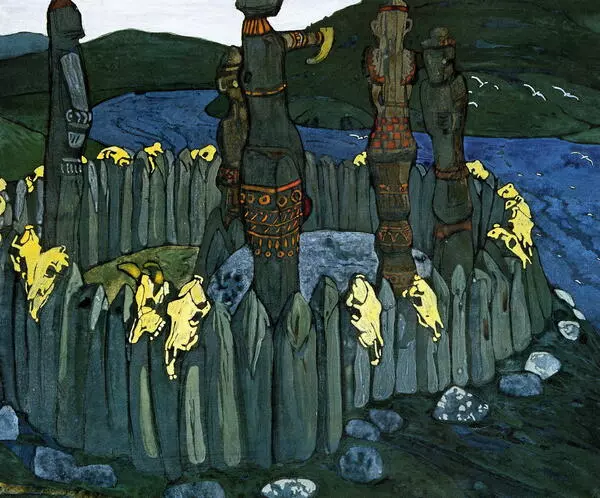NIcholas Roerich /rɛrɪk/ fully reflected his spiritual quest in ‘SantAna.’ Santana is Sanskrit for ‘flow.’ The artist interpreted this notion as ‘the flow of life, ’ which resonated with his own spiritual quest and the theory he eventually developed.
The external fixity of the composition is in fact misleading: the essence of the artwork is a continuous universal flow of life. Roerich wanted to stress the fusion of human and natural aspects. He depicts a figure of a hermit in the right corner of the painting. Thus, the artist asserts the human is but a part of nature, not the pinnacle of creation.
The outlines of the mountains, caves, the silhouette of the sitting elder reinforce the impression of unity and integrity of the world. The painting is imbued with an air of purity, which is naturally understood here as both the purity of the rarefied mountain air and the purity of the spirit.
This atmosphere is conveyed through the depiction of the mountains, towered on top of each other, almost completely concealing the background. Mountains are an indispensable attribute of Roerich’s late artwork. The artist saw them as a symbol of utmost joy and beauty.
The color palette consists of blues, light blues and light pinks. All of this reinforces the impression of total harmony. The painting shares many figurative and stylistic features with Roerich’s ‘Himalayan Series’ artworks. Both the studies from the series and ‘Santana’ share the theme of the majestic Himalayas. The mountains embody the idea of spiritual growth, connection with space and the ascent of man to harmony.
The paintings are marked by the color palette created by Roerich to reflect ‘the artist’s uttermost spiritual endeavour’. Vivid and pure color combinations that Roerich used for “Santana” were selected to create a sense of universal movement in cosmic space. It seems as if the artist had been looking and finally found the local symbolic color of space. Roerich also used colors to depict and recreate the cosmic light emitted by nature.
The external fixity of the composition is in fact misleading: the essence of the artwork is a continuous universal flow of life. Roerich wanted to stress the fusion of human and natural aspects. He depicts a figure of a hermit in the right corner of the painting. Thus, the artist asserts the human is but a part of nature, not the pinnacle of creation.
The outlines of the mountains, caves, the silhouette of the sitting elder reinforce the impression of unity and integrity of the world. The painting is imbued with an air of purity, which is naturally understood here as both the purity of the rarefied mountain air and the purity of the spirit.
This atmosphere is conveyed through the depiction of the mountains, towered on top of each other, almost completely concealing the background. Mountains are an indispensable attribute of Roerich’s late artwork. The artist saw them as a symbol of utmost joy and beauty.
The color palette consists of blues, light blues and light pinks. All of this reinforces the impression of total harmony. The painting shares many figurative and stylistic features with Roerich’s ‘Himalayan Series’ artworks. Both the studies from the series and ‘Santana’ share the theme of the majestic Himalayas. The mountains embody the idea of spiritual growth, connection with space and the ascent of man to harmony.
The paintings are marked by the color palette created by Roerich to reflect ‘the artist’s uttermost spiritual endeavour’. Vivid and pure color combinations that Roerich used for “Santana” were selected to create a sense of universal movement in cosmic space. It seems as if the artist had been looking and finally found the local symbolic color of space. Roerich also used colors to depict and recreate the cosmic light emitted by nature.

